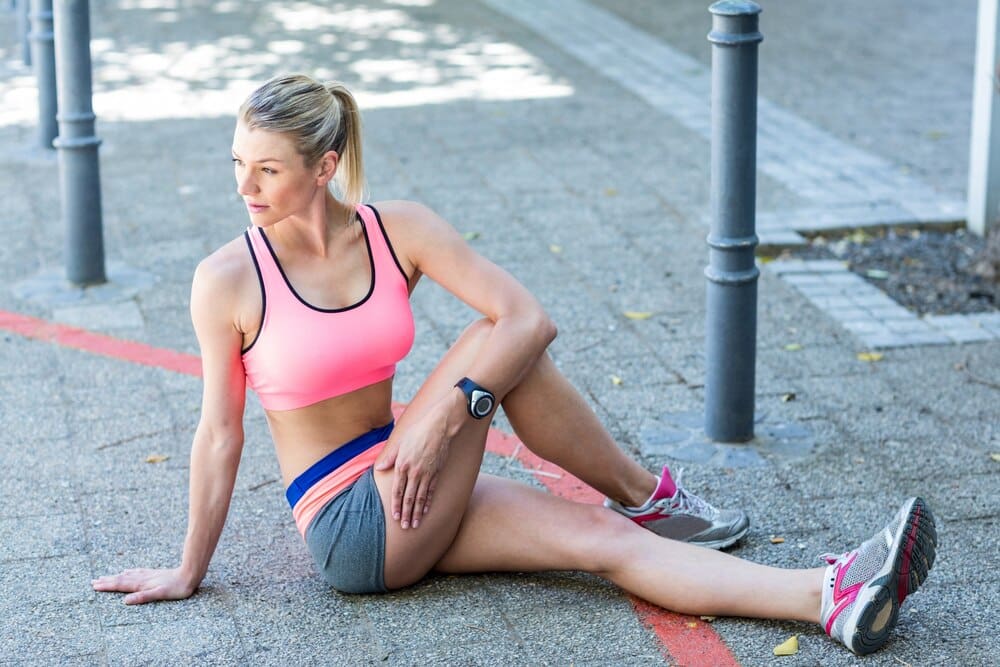For countless runners, it’s a familiar and dreaded sensation: a sharp, stabbing pain on the outside of the knee that appears mid-run, forcing a frustrating halt to an otherwise perfect workout. This common overuse injury, known as Iliotibial (IT) Band Syndrome, primarily affects athletes who engage in repetitive knee-bending activities, like running and cycling. The pain, localized where the thick band of connective tissue crosses the outer knee joint, typically arises not from a single traumatic event but from the cumulative stress of flawed biomechanics—most notably, weak hip muscles—and training errors like increasing mileage too quickly. Understanding that ITBS is fundamentally a problem of mechanics, not just inflammation, is the critical first step for any athlete looking to conquer this nemesis and return to the road for good.
What Exactly Is the IT Band?
Before diving into treatment, it’s essential to understand the anatomy you’re dealing with. The iliotibial band is not a muscle you can simply stretch into submission. Instead, it’s a long, thick, and incredibly strong band of fibrous connective tissue, or fascia, that runs along the outside of your thigh.
It originates at the top of your pelvis, with fibers connecting from two key hip muscles: the tensor fasciae latae (TFL) and the gluteus maximus. From there, it extends down the length of the thigh, crosses the outer side of the knee, and attaches to the top of the shinbone (tibia). Its primary job is to provide stability to the outside of the knee joint as it flexes and extends, playing a crucial role in nearly every step you take while running.
Unpacking the Causes: Why Does ITBS Happen?
For years, the prevailing theory was that ITBS was a friction injury, caused by the IT band repeatedly rubbing back and forth over a bony prominence on the outer thigh bone (the lateral femoral epicondyle) as the knee bent. However, recent research has updated this understanding. Anatomical studies show the IT band is firmly anchored to the femur, making significant friction-causing movement unlikely.
The more modern and evidence-supported theory points to compression. When biomechanics are off, the IT band can compress a highly sensitive layer of fat and connective tissue that sits beneath it, right over the outside of the knee. This compression is what triggers the inflammation and intense, localized pain characteristic of the syndrome.
Training Errors
The most common trigger for ITBS is doing too much, too soon. Your connective tissues, including the IT band and its associated structures, adapt to stress far more slowly than your muscles and cardiovascular system. A sudden spike in mileage, intensity, or the addition of hill repeats can overload these tissues before they’re ready, leading to irritation and compression.
Running consistently on a cambered or banked surface, such as the sloped edge of a road, can also be a culprit. This causes the downhill leg to angle inward, placing greater tension on the IT band. Likewise, extensive downhill running places a heavy eccentric load on the quadriceps and increases the forces acting on the knee joint, exacerbating any underlying mechanical flaws.
Biomechanical Issues
Training errors might light the match, but poor biomechanics provide the fuel. The single biggest culprit behind ITBS is weak hip abductor muscles, particularly the gluteus medius. This muscle sits on the side of your hip and is responsible for stabilizing your pelvis when you’re standing on one leg—which is exactly what you’re doing with every single running stride.
When the gluteus medius is weak, the opposite hip tends to drop with each step. This “hip drop” causes the thigh to angle inward (a movement called femoral adduction), which in turn increases tension and compression on the IT band at the knee. Another common issue is a “crossover gait,” where a runner’s feet cross over the body’s midline, creating a similar effect of increased tension on the outer thigh and knee.
Recognizing the Symptoms: Is It Really ITBS?
The hallmark symptom of IT Band Syndrome is a sharp, burning, or aching pain on the lateral (outer) side of the knee. A key diagnostic clue is its timing: the pain often doesn’t appear at the beginning of a run but emerges predictably after a certain distance or duration and progressively worsens until you are forced to stop.
The pain might be most pronounced when your foot strikes the ground and when your knee is slightly bent, at around a 30-degree angle. Activities like walking down stairs or running downhill, which require more control from the knee, can be particularly painful. In some cases, you might also notice some localized swelling or a snapping sensation on the outside of the knee.
It’s important to differentiate ITBS from other common sources of knee pain. For instance, patellofemoral pain syndrome (runner’s knee) typically presents as a dull ache behind or around the kneecap, while a lateral meniscus tear might cause locking, catching, and more generalized joint-line pain.
The Road to Recovery: A Step-by-Step Treatment Plan
Beating ITBS requires a two-pronged approach: first, calming the immediate irritation, and second, fixing the underlying mechanical problems that caused it in the first place. Simply resting until the pain subsides without addressing the root cause is a recipe for recurrence.
Step 1: Calm the Inflammation
Your first priority is to stop doing what hurts. This means taking a break from running and any other activities that trigger the pain. This period of relative rest is non-negotiable. Continuing to run through sharp pain will only deepen the irritation and prolong your recovery.
Applying ice to the painful area for 15-20 minutes several times a day can help reduce inflammation and numb the pain. While over-the-counter non-steroidal anti-inflammatory drugs (NSAIDs) like ibuprofen can offer temporary relief, they primarily mask the symptoms and do not correct the underlying issue.
Step 2: Address the Root Cause with Strength Training
This is the most critical phase of your recovery and prevention plan. The goal is to strengthen the muscles that control your hip and pelvic stability. A strong “posterior chain”—your glutes and hamstrings—is your best defense against ITBS.
Focus on exercises that target the hip abductors and external rotators. Key movements include:
- Clamshells: Lie on your side with your knees bent and hips stacked. Keeping your feet together, lift your top knee towards the ceiling without rocking your pelvis back.
- Side-Lying Leg Raises: While lying on your side with legs straight, lift your top leg towards the ceiling, making sure to lead with your heel to engage the gluteus medius, not the TFL.
- Glute Bridges: Lie on your back with knees bent and feet flat on the floor. Drive through your heels to lift your hips until your body forms a straight line from your shoulders to your knees.
- Lateral Band Walks: Place a resistance band around your ankles or knees. With a slight bend in your knees and hips, take slow, controlled steps sideways, keeping tension on the band.
Consistency is key. Aim to perform these exercises at least three to four times per week, focusing on slow, controlled movements and proper form.
Step 3: Rethinking Mobility and Stretching
Many athletes instinctively try to stretch the IT band itself, often by aggressively using a foam roller on the side of their thigh. This is largely ineffective and can be counterproductive. The IT band is an incredibly tough piece of fascia that you cannot realistically lengthen through stretching or rolling. In fact, rolling directly on the painful, inflamed area at the knee can increase compression and make things worse.
Instead, use your foam roller on the muscles that attach to the IT band: the glutes at the back of your hip and the TFL at the front/side of your hip. Releasing tension in these muscles can help reduce the overall pull on the band. Gentle stretches for the glutes, such as a figure-four stretch, can also be beneficial.
Prevention and a Smart Return to Running
Once the pain has subsided and you’ve established a consistent strength routine, you can begin a gradual return to running. Rushing back is the fastest way to get reinjured.
Building a Resilient Foundation
The best way to prevent ITBS is to make hip and glute strengthening a permanent part of your fitness regimen, not just something you do when you’re hurt. A few sessions a week can maintain the stability needed to handle your running load. Additionally, pay attention to your running form. If you suspect you have a crossover gait or significant hip drop, consulting a physical therapist for a gait analysis can provide invaluable, personalized feedback.
The Gradual Return
Start your return with a conservative walk-run program. For example, begin with 1 minute of running followed by 2-3 minutes of walking, repeated for a total of 15-20 minutes. If this is pain-free both during and after, you can slowly increase the running intervals and total duration over several weeks.
Begin on a flat, even surface like a track or treadmill to minimize stress. Listen carefully to your body. If you feel the familiar pain returning, stop immediately and take an extra day or two of rest before trying again with a less intense workout. A smart approach is the key to turning a frustrating injury into a valuable lesson in building a stronger, more resilient running body.
In conclusion, IT Band Syndrome is far more than just a simple case of knee pain; it’s a clear signal from your body that there are underlying weaknesses in your kinetic chain. While the initial pain demands rest and care, the long-term solution lies in diligent, targeted strengthening of the hips and glutes. By shifting the focus from simply treating the symptom to correcting the cause, you can not only overcome this common running ailment but also build a more powerful and injury-resistant foundation for all your future miles.







